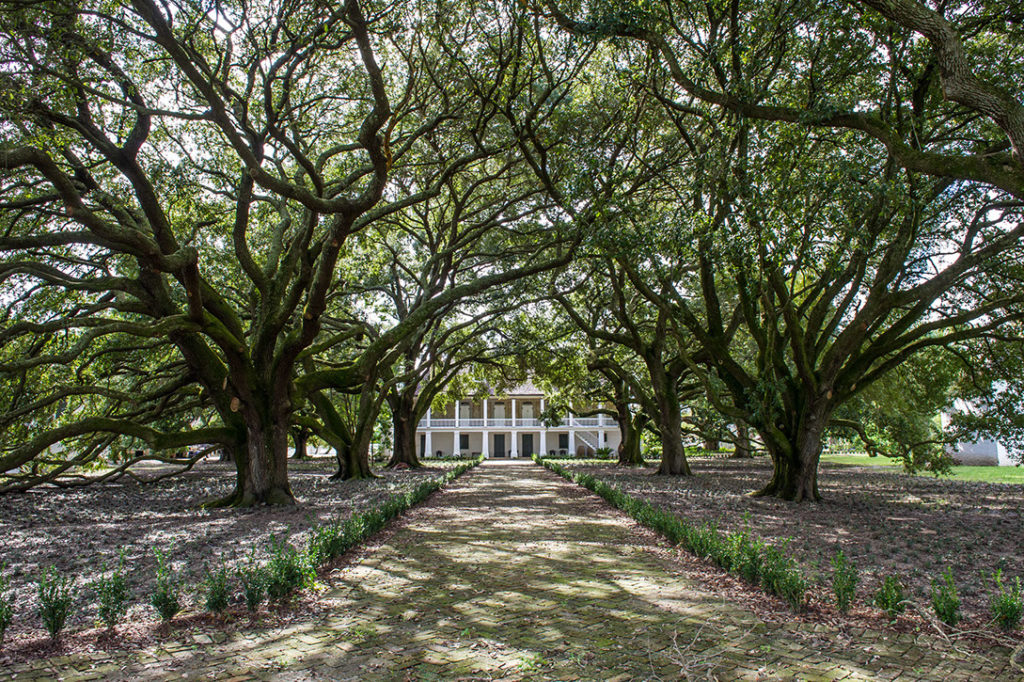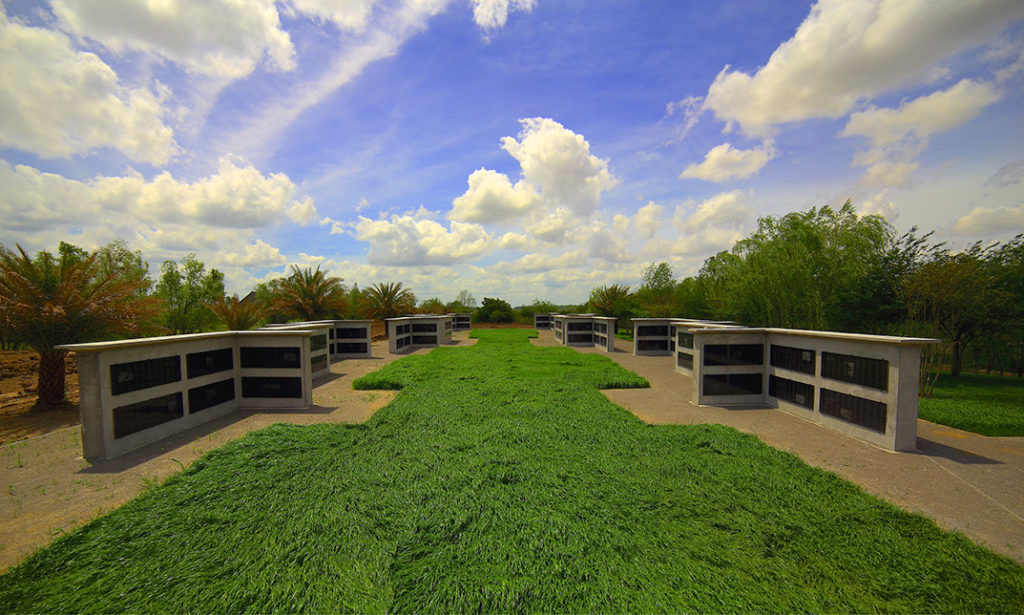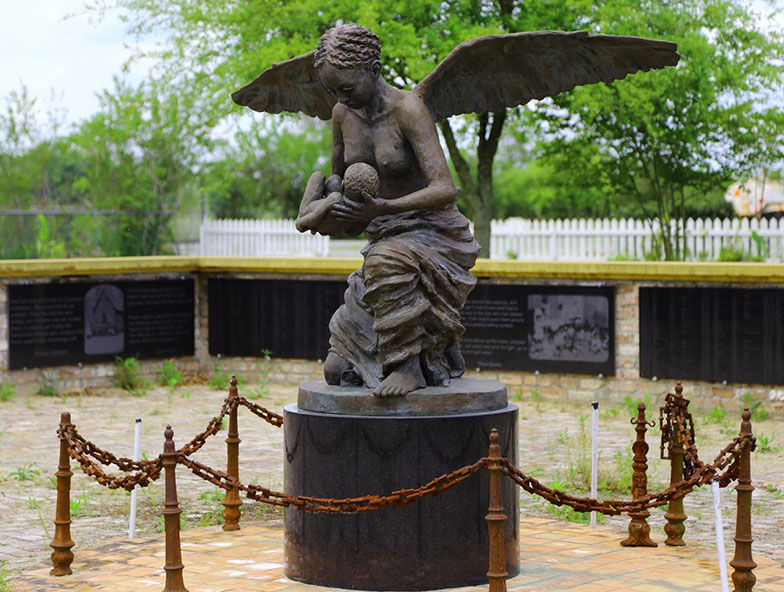Photographs ∼ Whitney Plantation ∼ New Orleans
Raised French Creole style cottage was built of masonry and cypress in the late 18th century. It is one of the earliest and best preserved Creole plantation houses standing on River Road. Sometime prior to 1815, the Big House was expanded to its present configuration with seven rooms on each level, plus a full-length gallery across the front and an open loggia facing the rear. This is also one of the very few historic American houses known to have received decorative wall paintings on both its exterior and interior. (www.whitneyplantation.com)
This memorial is dedicated to all the slaves who lived in Louisiana. It is named after Gwendolyn Midlo Hall, author of Africans in Colonial Louisiana (1992) and Slavery and African Ethnicities in the Americas (2005), in recognition of her contribution to the history of slavery in the Americas. All 107,000 names recorded by the author in the Louisiana Slave Database are engraved on 216 granites slabs and mounted on 18 walls, along with slavery related pictures and quotes. (www.whitneyplantation.com)
Perhaps the most striking encounters on the plantation are the 40 statues of slave children by Ohio based artist Woodrow Nash. Their strikingly real appearance serves as a reminder to the visitor that it wasn’t just adults that were effected by slavery. (www.whitneyplantation.com
The Field of Angels is a section of the slave memorial dedicated to 2,200 Louisiana slave children who died in St. John the Baptist Parish. These names are documented in the Sacramental Records of the Archdiocese of New Orleans. Their names are engraved on granite slabs along with quotes describing their everyday life. A bronze sculpture depicting a black angel carrying a baby to Heaven is installed in the middle of the field. Rod Moorhead of Mississippi is the sculptor. (www.whitneyplantation.com)
This church is not original to the Whitney Plantation. The structure was erected after the Civil War in Paulina, on the east bank of the Mississippi River in St. James Parish. For many years, this was the only African-American church in the immediate area, and the former slaves of several River Road plantations attended its services. The church donated this historic structure to the Whitney when the community built a new chapel in 1999. The text below is a history of the church on the website of the First Community-Antioch Baptist Church:
“The Antioch Baptist Church was conceived in the hearts of the former slaves in 1868. During this period in history, racism existed in ways that most of us have only read about. It was at this time that God called some brave men from the Paulina area to join together and form a burial society. The society was an organization that operated similarly to our present day burial insurances. Members paid nickels and dimes in membership dues and the society was responsible for their funeral expenses. The name Anti-Yoke was chosen for this society. This name spoke freedom – not tied or bound to anyone.
In September of 1870, the Anti-Yoke Society purchased two tracks of land in Paulina, LA from Michael Martin and erected a building that was used for church services. The original structure still exists today. This building became known as the Anti-Yoke Baptist Church. The church was renamed Antioch Baptist Church in 1890 and was the only Black church for miles on the east bank of the Mississippi River. In 1973, Ferdinand Gaines, Jr. became Antioch’s sixth pastor in its history. In August of 1999, Antioch relocated to a new 34,000 square foot facility in Lutcher, LA and again underwent a name change. The new name, First Community-Antioch Baptist Church reflects a church for the community, serving as a resource for both spiritual and human needs.” (www.whitneyplantation.com)





